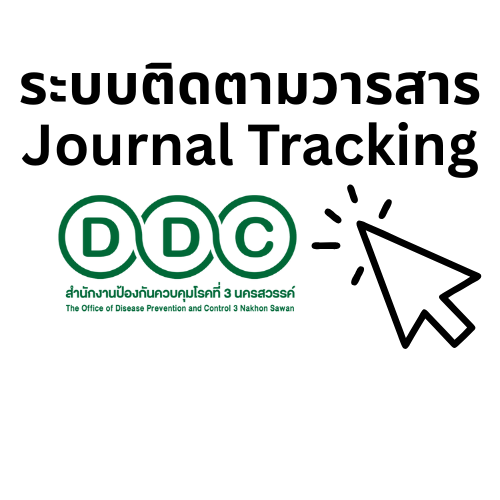The Development of Traffic Pattern to Prevent Traffic Injury By The Phukieo Traffic Injury Prevention Cooperation, Chaiyaphum Province
Keywords:
Participatory, Prevention of road traffic accidents in accordanceAbstract
The purpose of this action research was to develop the road traffic injury prevention model and the effectiveness in Phu Khieo District, Chaiyaphum Province. The target consisted of 80 people including: local government administrative officers, transportation personnel, the police force, teachers, community hospital personnel, local leaders, public health volunteers, rescue and civilian volunteers. The research processes were; data collection and analysis of the road traffic injury situation and prevention, collaborating with the road traffic injury prevention model focus on Appreciation Influence Control (A-I-C) technique, and implementing the new model and outcome evaluation. The instruments for data collection included primary information, a deep interview question form, a questionnaire on participation, and a questionnaire on satisfaction: which was made between December 1, 2016 to July 31, 2017. The statistics used for data analysis were percentage, mean, standard deviation and t-test.
The development results for the road traffic injury prevention patterns can be summarized as follows: 1) the management of data, surveillance systems and simulation of emergency situations 2) Injury and death investigation from road traffic injuries 3) propel collaboration on multidisciplinary teams working 4) project planning 5) collaborates with participants in the sub-district 6) assesses and maps accident risk 7) collaborates with community participants and families 8) road traffic safety organization 9) risk communication system and 10) performance evaluation
The results of this study indicated that only one sub-district team reached an advanced level, six sub-district teams reached a good level, and one sub-district team reached a standard level. Road traffic accidents and deaths have decreased. There are new innovative models for road traffic injuries prevention such as the “Baan Suon Oil Community Checkpoint Model”, youth volunteers in road traffic injury prevention, and family models. Team participation has increased significantly to a high level (p = 0.5), in addition, membership satisfaction has increased greatly.
The results of this study can be served as a community safety master plan to continuously prevent road traffic injuries and contribute to sustainable development.
References
2. Iamtrakul, P., & Pimonsathean, P. Impact of Urban factors on road accident in Bangkok, Thailand. Lowland Technology International, 2010; 12 : 30-40.
3. Thai Health Promotion Foundationโครงการวิจัยกฎหมายจราจรทางบก.ประเด็นการบังคับใช้กฎหมาย และการจัดการ [อินเทอร์เน็ต], 2009. [The study of land traffic law: Enforcement and management 2017 10 1] ; Retrieved June 15, 2011, from http:// www.roadsafety.disaster.go.th/
4. ศิริชัย กาญจนวาสี. ทฤษฎีการประเมิน. พิมพ์ครั้งที่ 7. กรุงเทพฯ :โรงพิมพ์แห่งจุฬาลงกรณ์มหาวิทยาลัย; 2554.
5. ภาวิณี เอี่ยมตระกูล พิริยา ซิ้มเจริญ และ พรชัย จันทร์ถาวร. แนวทางศึกษาการวิจัยเชิงปฏิบัติการแบบมี ส่วนร่วมเพื่อส่งเสริมความปลอดภัยทางถนนของเมือง: กรณีศึกษา เทศบาลเมืองท่าโขลง จังหวัดปทุมธานี [วิทยานิพนธ์ปริญญาวิทยาศาสตรมหาบัณฑิต]. กรุงเทพฯ: มหาวิทยาลัยธรรมศาสตร์; 2555.
6. รัชสถิต สุจริต ชมพูนุท โมราชาติ และสุรีย์ ธรรมิกบวร. แนวทางการป้องกันอุบัติเหตุทางถนนของจังหวัดยโสธร. ยโสธร : 2556.
7. พันชัย เม่นฉายและอาภาพรรณ สัตยาวิบูล. การพัฒนารูปแบบการลดอุบัติเหตุจราจรบนท้องถนนโดยการมีส่วนร่วมของชุมชนในจังหวัดนนทบุรี.กรุงเทพฯ: มหาวิทยาลัยราชภัฏสวนดุสิต ; 2556
Downloads
Published
How to Cite
Issue
Section
License
Copyright notice
Article published in the Journal of Disease and Health Risk DPC.3 Nakhon Sawan. It is considered a work of academic research and analysis as well as the personal opinion of the author. It is not the opinion of the Office of Disease Prevention and Control 3, Nakhon Sawan. Or the editorial team in any way Authors are responsible for their articles.
Privacy Policy
Name, address and e-mail address specified in the Journal of Disease and Health Risk DPC.3 Nakhon Sawan. It is used for identification purposes of the journal. And will not be used for any other purpose. Or to another person.









